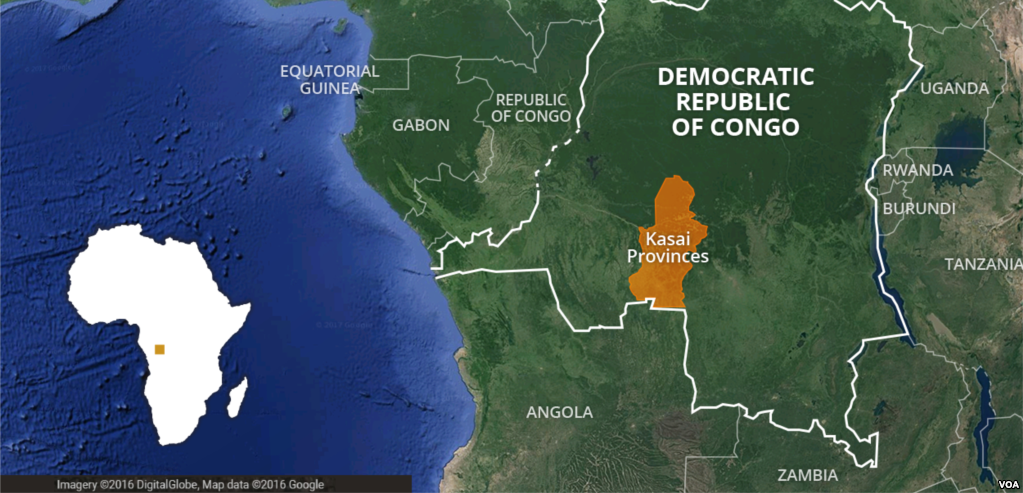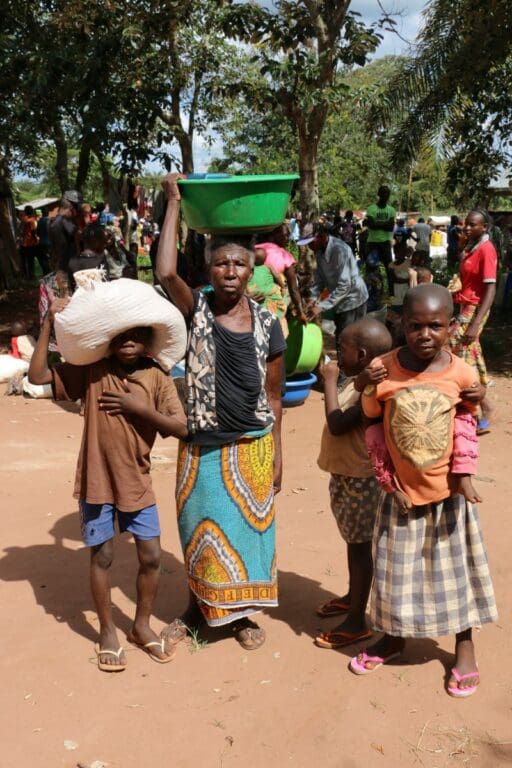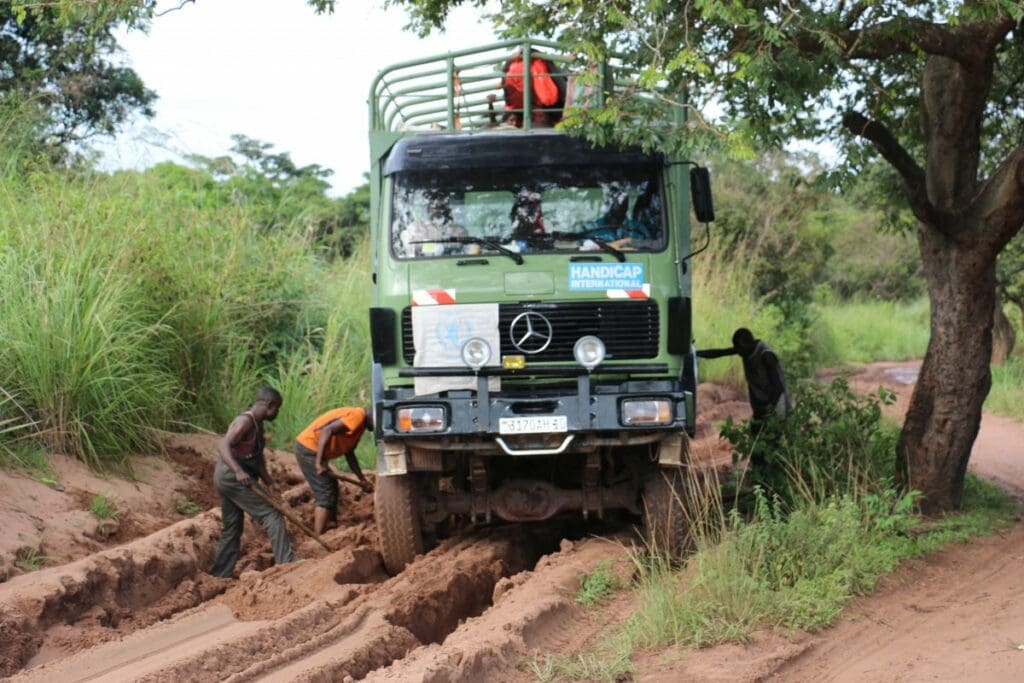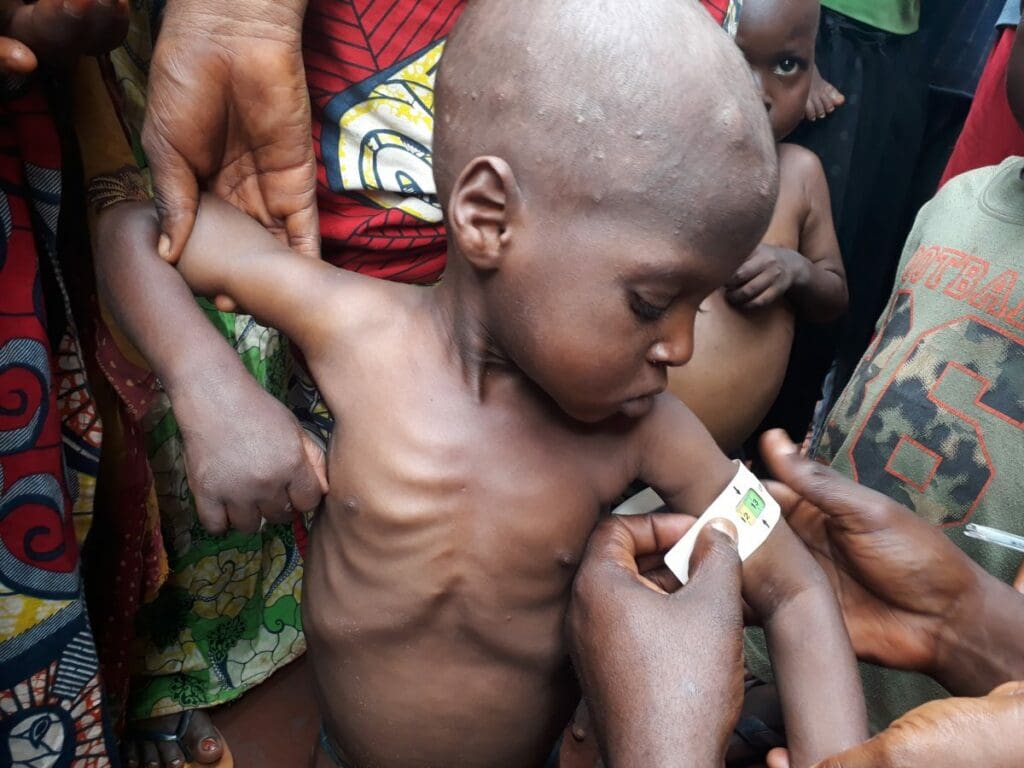Crisis Alert: 300,000 Children Facing Starvation in the DRC

Since 2016, fighting in the Democratic Republic of Congo (DRC) has displaced millions of people and devastated the country’s agricultural production, plunging the country into a widespread hunger crisis. Some 300,000 children are at risk of dying of starvation.
The scale of the crisis is staggering. Today, the country’s internally displaced population stands at an estimated 4.1 million—the largest in Africa. That’s more than the internally displaced populations of Syria, Yemen and Iraq combined.

Esther Kadjanza was born in Kamonia 70 years ago. Like many residents of her village, she fled when red-ribboned fighters associated with the Kamuina Nsapu militia attacked it in April 2017, beheading her husband and a son, among many others.
Most of these displaced families rely on subsistence farming to survive, and have now missed two consecutive planting seasons because of fighting. The most vulnerable now eat little more than one meal a day—typically just cassava roots and leaves—that lack protein and vital micronutrients.
In response, WFP has declared a Level 3 emergency—the agency’s most serious designation—to scale up its operation. In an effort to prevent famine, the agency recently energized two key elements of its emergency operation in the country’s war-ravaged Kasai region: Cash distributions in areas where local markets are still functioning, and specialist support to check acute malnutrition among women and children.
Esther Kadjanza is one of these women. Last spring, militia attacked her village, killing her husband and son. She fled to the nearest community of Kabilemgu—a two-day walk on foot—only to find residents there fleeing en masse.
“I didn’t have the strength to move anymore, and thought I would die there. But it was so dangerous that we had to go hide in the forest, with only leaves and wild berries for food,” she told WFP aid workers. “When we got out from the forest to go back to Kabilemgu, we would find beheaded corpses in the road.”
Escalating violence, non-existent infrastructure and insufficient resources continue to hamper WFP’s operations. Before violence erupted there in 2016, the agency did not have a presence in the Kasai region; communities there had never needed humanitarian aid before. In a region the size of Germany, with multiple rival militias and a road network that is largely impassable during the October-May rainy season, transporting and delivering humanitarian supplies continues to be a challenge.

A lack of paved roads and a prolonged rainy season in the DRC makes delivering humanitarian aid by truck especially challenging. Here, workers struggle to free a WFP truck trapped in the mud.
Due to funding shortfalls, food rations of grains, beans, vegetable oil and salt have been reduced by half, which means those in need are not receiving adequate nutrition—especially children. Aid workers are also concerned that half rations provide even less incentive for families hiding in the country’s dense forests to return to their villages and resume tending their fields, further exacerbating the country’s food insecurity.
The deepening hunger crisis has led to drastic coping mechanisms among the country’s most vulnerable, including prostitution, begging and eating seeds that should be planted. Meanwhile, rape and other forms of sexual violence have surged in Kasai.
The humanitarian crisis in the previously peaceful region is part of a dramatic deterioration in the DRC, where half the population now struggle to get the food they need on a daily basis.

4-year-old Mulamba Lusazo is evaluated by aid workers in the DRC’s Kasai region. Thanks to WFP, he is now receiving a special fortified food to treat moderate acute malnutrition.
And children are the most at risk. Right now nearly 2 million Congolese children suffer what is known as “severe acute malnutrition”—more than the number of children suffering from the same type of malnutrition in Nigeria, Somalia, South Sudan and Yemen combined.
WFP is working around the clock to prevent the crisis in DRC from becoming a full-blown famine. But we needs your help—before it’s too late.




